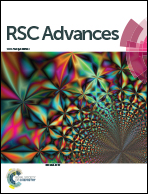Effect of chemical pretreatments on magnetic susceptibility of loess from Central Asia and the Chinese Loess Plateau
Abstract
Magnetic susceptibility (MS) as a paleoclimatic proxy plays an important role in paleoenvironmental reconstruction and past global climatic change. In order to discriminate the effect of composition on the MS of Quaternary eolian loess in inland arid Central Asia (CA), a series of comparative chemical experiments were designed to investigate the effects of different components on MS of loess from the Ili Basin CA and Chinese Loess Plateau (CLP). The results indicate that hydrochloric acid (HCl) can not only remove carbonate minerals, but also react with ferrous ions minerals by dissolving fine superparamagnetic particles (SPs), which reduces MS, especially in the CLP samples. Compared to the original samples, MS (χlf) of acetic acid (AA) pretreated samples from CA and CLP increased by 20.3% and 4.8%, respectively, and their frequency-dependent MS (χfd) increased by 53.4% and 13.0%, respectively, which indicates that the effect of carbonates on MS is greater for CA samples than for CLP samples. The variation in MS was below 5% in samples pretreated with perhydrol (H2O2) or distilled water, indicating that organic material and soluble components have very small influences on the MS. Temperature-dependence MS curves indicate that the transformation of magnetic minerals during the cooling of loess from the CLP mainly affected fine particles in the SPs, and that the contents of lepidocrocite and maghemite or goethite in the CA loess are lower than those in the CLP. The loess MS enhancement mechanism in Central Asia differs from that in the CLP.



 Please wait while we load your content...
Please wait while we load your content...